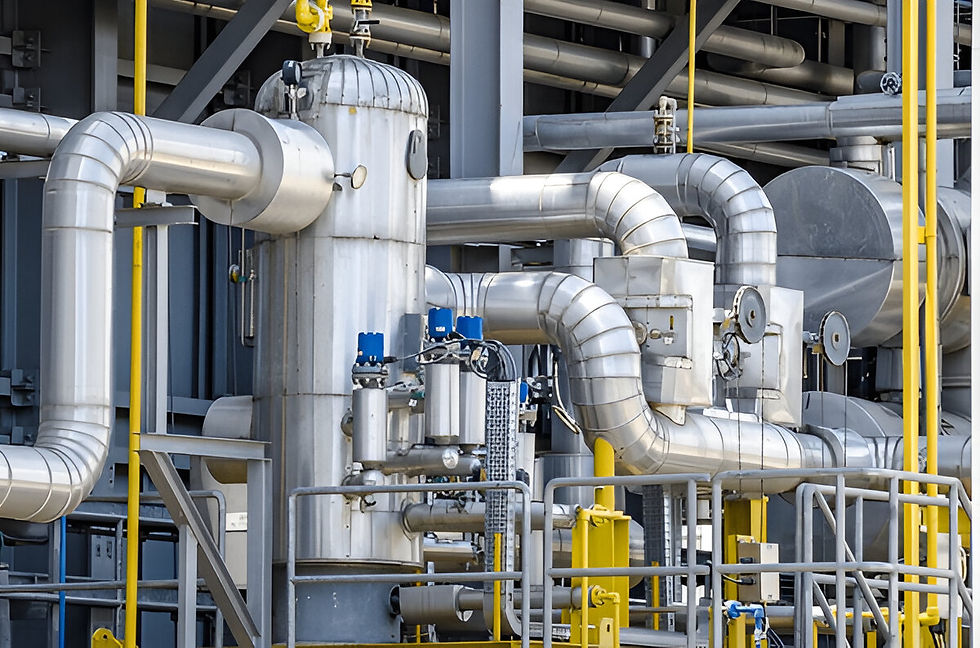Choosing the Right Size and Capacity for Your Coalescing Plate Separator
- ameliya lanne
- Aug 14, 2025
- 3 min read
Have you ever considered how the size and capacity of your separator directly impacts operational efficiency in your industry? As a critical piece of infrastructure in oil and water separation, the coalescing plate separator must be not just a fit, but the perfect fit. So, how does one navigate this challenging landscape of sizes and capacities? Well, I'm here to simplify that for you! This article will guide you through the intricacies of choosing the right size and capacity for your coalescing plate separator.
Selecting the appropriate separator isn't as daunting as it appears. However, it does require some understanding of technicalities and careful consideration of several factors. With our extensive experience in home improvement and architecture, we're perfectly placed to provide an in-depth examination of this seemingly complex subject. Wondering if the size really matters or how capacity influences performance? Look no further!

Why Size Matters
Why does the size of a coalescing plate separator matter, you ask? Well, the size significantly impacts the performance and the overall effectiveness of the device. A separator that's too small may not be able to process the intended amount of fluid effectively, while an excessively large one could take up valuable space while inefficiently using energy resources.
First, you need to determine the expected flow rate; that is, the rate at which fluid needs to be processed through the separator. Second, the physical space available for the separator to be set up is another crucial aspect to consider. While considering these, keep an eye on potential adjustments and changes in these two factors in the future.
Finally, the type of fluid being handled - its consistency, particulate size and density - plays a crucial role here. Crude oil, for instance, requires different parameters compared to processed oil or water.
Capacity Come into Play
Understanding capacity is an integral part of selecting the perfect coalescing plate separator. The capacity determines the amount of liquid the separator can handle at a time, influencing the duration the fluid remains in the separator – known as 'the residence time'. An ideal residence time enables the separator to remove maximum impurities.
The first step is to estimate the volumes and type of fluid that will be processed. Next, consider the desirable level of fluid purity after separation and the quantity of specific impurities that need separating. And lastly, take into account the various operation modes – normal, peak and turndown operation levels.

The Intricacies of Separator Design
While size and capacity remain the primary parameters, it's crucial to delve into the design aspects of the coalescing plate separator. This includes everything from the geometry and slant of the plates to the spacing and materials used. All these aspects profoundly influence the efficiency of separation, maintenance needs, and lifespan of the separator.
Cost Implications
Finalizing the size and capacity of your separator will also affect its cost. Both the initial capital cost and ongoing operational and maintenance costs will vary depending on your choice.
Environmental Impact
The environmental footprint of a coalescing plate separator is important to consider. Effective separation reduces the discharge of oily waste into the environment. However, larger separators may consume more energy and resources, potentially increasing the environmental impact.
Conclusion
Selecting the right size and capacity for your coalescing plate separator is a delicate balancing act. By considering the factors discussed and understanding the needs of your specific application, you're more equipped to make a well-informed decision.
Remember, the perfect fit may not be the largest or the most expensive - it's the one which meets your needs effectively and increases operational efficiency while reducing environmental impact. An appropriately sized separator designed with future capacity and requirements in mind provides the optimum solution. So before you make the leap, let your requirements guide you towards the right size and capacity for your coalescing plate separator.






Comments